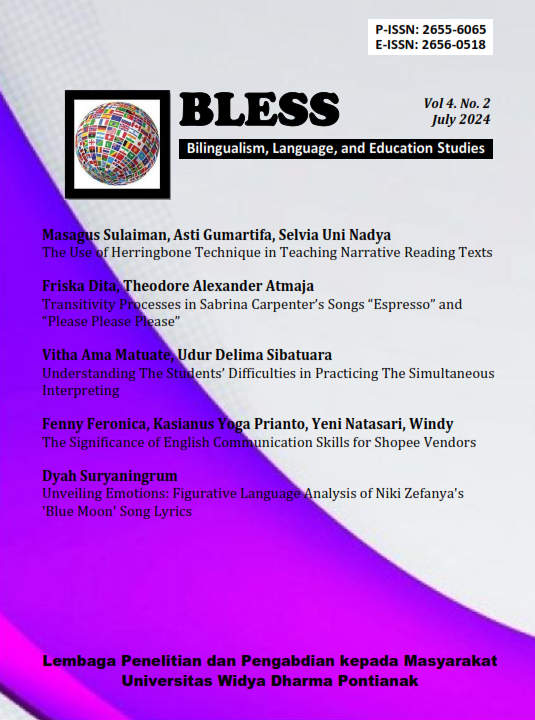Understanding The Students’ Difficulties In Practicing The Simultaneous Interpreting
Abstrak
Simultaneous interpreting is one of the most difficult forms of interpreting because it requires interpreters to convert one spoken language into another in real time. Despite its significance, students frequently find it difficult to acquire this ability, particularly those who are only now beginning to learn the basics of interpretation. The purpose of this study is to look into the challenges that students have when practicing simultaneous interpreting. The information was gathered from the sixth semester of Widya Dharma University Pontianak's English Language and Culture Department. 26 students were selected for this study based primarily on the outcomes of their simultaneous interpretation practice. Additionally, the data's outcome was described using the descriptive qualitative method. Questionnaires, interviews, and tests were done as research instruments to collect the data. The results showed that when it came to English-Indonesian simultaneous interpreting, the students felt more comfortable than when they performed Indonesian-English simultaneous interpreting. Moreover, there are certain difficulties when doing simultaneous interpreting. The students encountered eight challenges while practicing simultaneous interpreting. These include finding it difficult to keep up with the speaker's speed, lacking vocabulary, having to deal with emotions while simultaneous interpreting, not getting used to do simultaneous interpreting, losing focus in simultaneous interpreting process, lacking practice, lacking cultural knowledge in both source and target language, and having unprepared tools for simultaneous interpreting.


